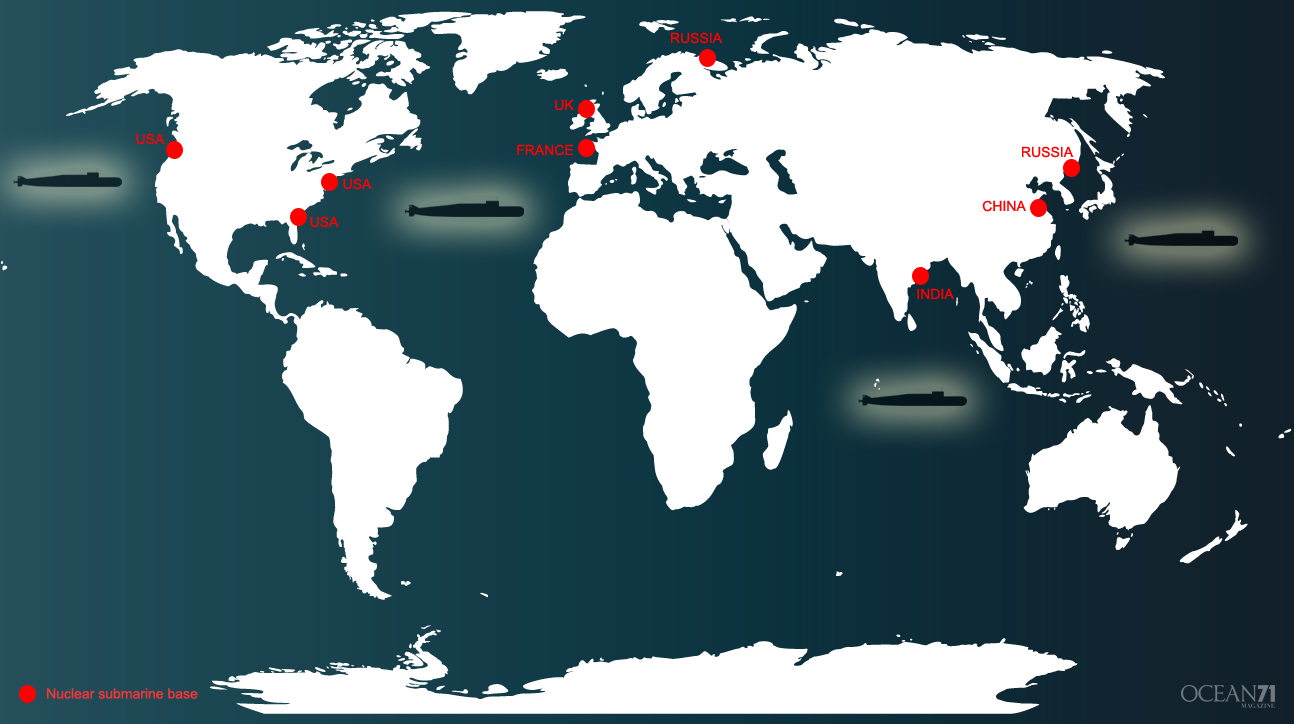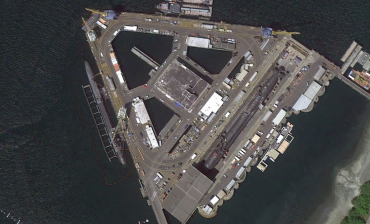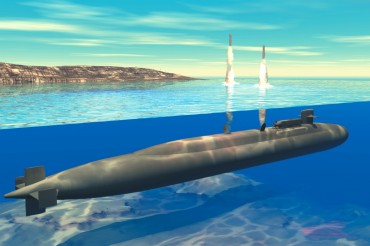WARNING: Some of this content has to be considered cautiously. It is likely that misinformation is part of the states’ nuclear dissuasive force.
A few days ago, the French daily newspaper Le Télégramme published a well-documented article (only available in French) revealing serious security breaches within one of the most sensitive military sites in France: Île-Longue’s base in Brittany, home port of the 4 French submarines armed with nuclear ballistic missiles. One of the breaches is clearly outlined: Internet.
We were curious of the other nuclear states that are armed with such military force. Would it be that supposedly secret information was to be found online ?
Indeed, most of the information related to these submarines is directly available to anybody. With a little bit of time and just a few clicks, pretty much anyone can have access to data you would think is confidential: in less than an hour we were able to find accurate satellite pictures of the nine official submarine bases in six countries; the type, dimensions, speed and number of theses submersible ships, even the total of missiles on board as well as their range.
Let’s clarify a few things, because there are several kinds of nuclear submarines.
The first type is called SSN (Ship Submersible Nuclear). These ones are propelled by a nuclear engine, allowing them to cover large distances underwater without having to surface. Most of these ships have “traditional” ammunition designed to sink other submarines or ships.
The second type, the one that is used as a dissuasion force, is designed to carry these famous nuclear ballistic missiles. They are called SSBN (Ship Submersible Ballistic Nuclear). In theory, they are not meant to attack but only to defend their country by their presence somewhere in the oceans.
The secret is kept as to their position and itinerary, but on the contrary states are rather proud to announce the number of active submarines and their destructive power, because the whole system is based on the other one’s fear.
In this large-scale bluffing “game”, the United States of America is obviously the highest bidder with a fleet of 14 active SSBNs, based in their three different home ports covering the Pacific and Atlantic Oceans. Russia owns and operates 10 SSBNs, either in the Pacific Ocean or in the Barents Sea. China admits to its four submarines in the Yellow Sea, but this number could be greater. France and England own four SSBNs each, based respectively in Brittany and in Scotland.
Until June 2013, this underwater defence strategy was strictly owned by the closed group of the “Big Five”. But recently, a new state has made its way in this small circle: India, with its first SSBN still under testing.
Therefore, somewhere in the depths of our planet’s oceans, 37 submarines are cruising along with an average of 16 missiles on board. Each one of these weapons is capable of travelling around 5’000 to 8’000 kilometres, and is theoretically equal to 35 times the Hiroshima explosion… quite dissuasive indeed.
In a past day and age, when nuclear testing was at its beginning, the countries used to be very secretive about their programs. Today, defence strategy has changed. It isn’t all about striking, it is also about marketing and advertisement. Misleading? Probably, as it is often the case.


